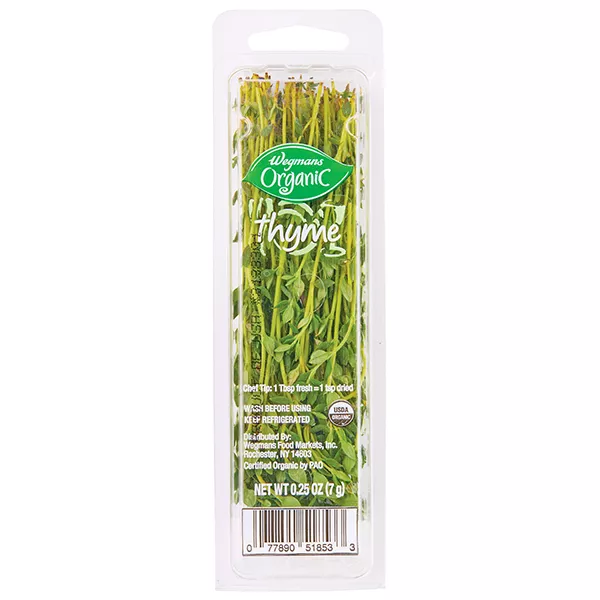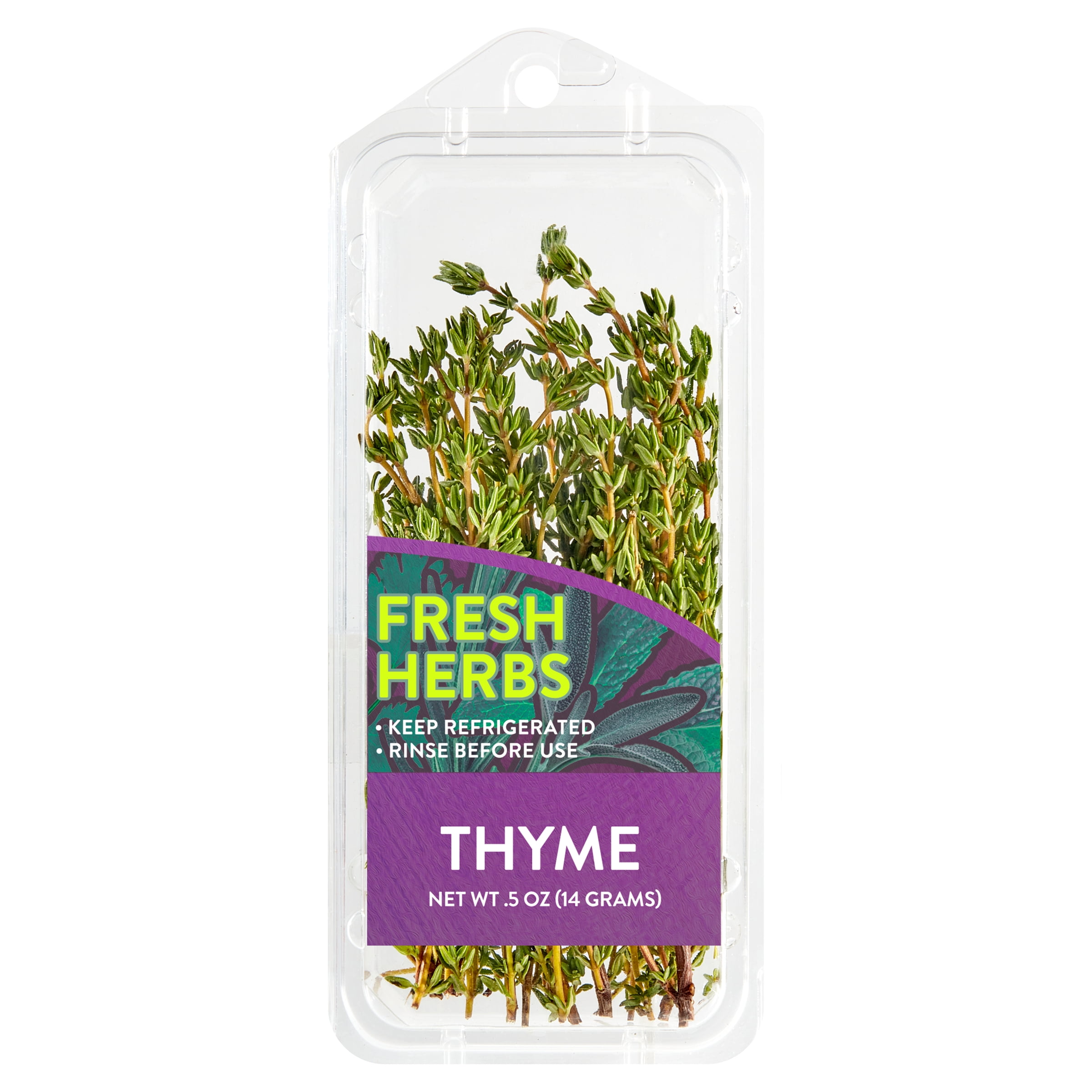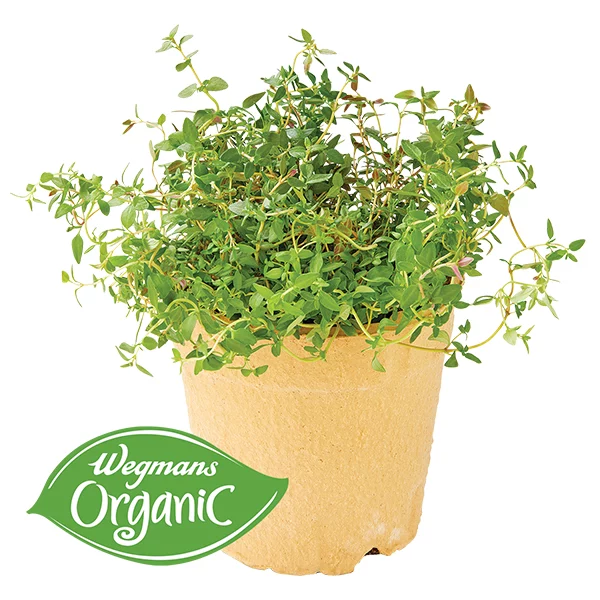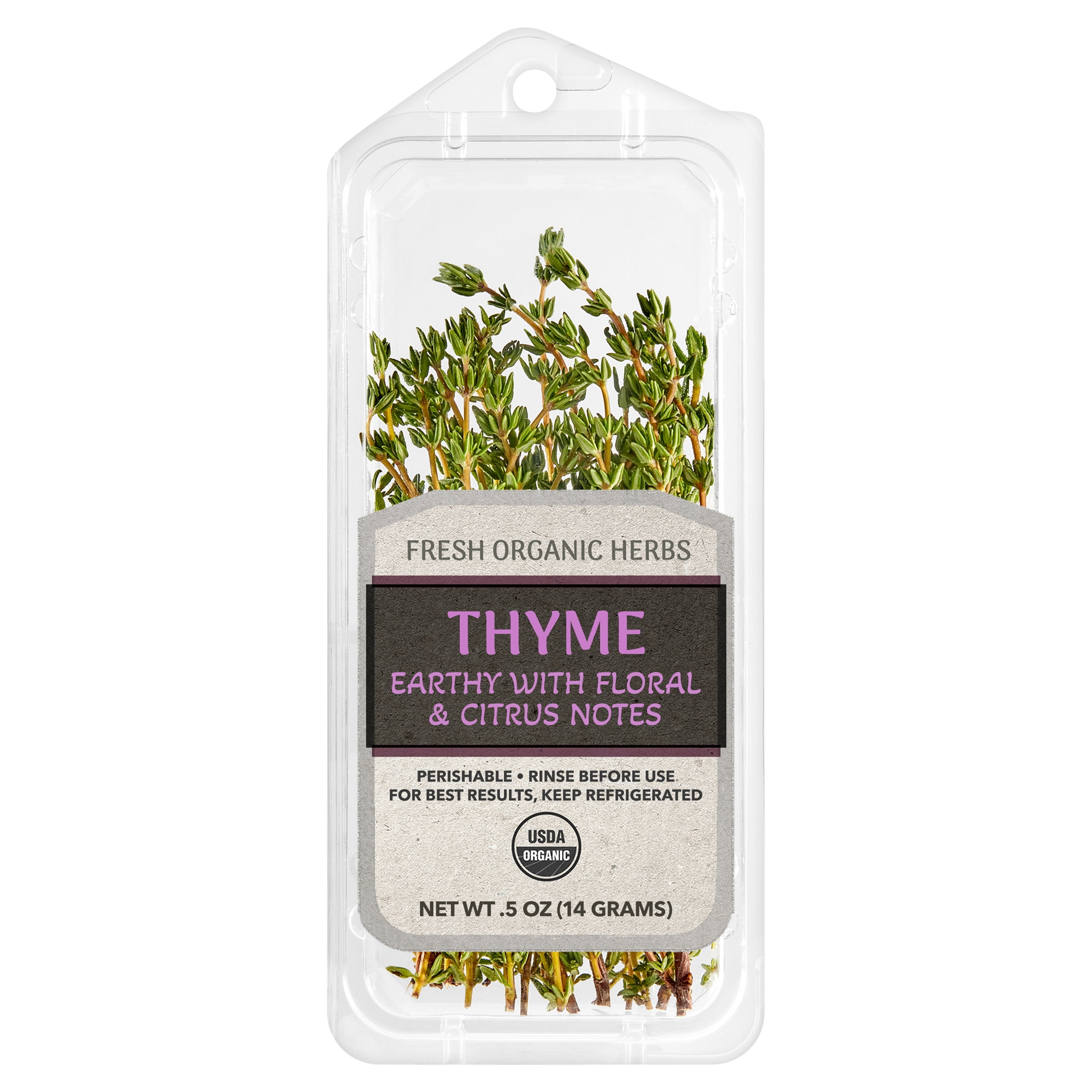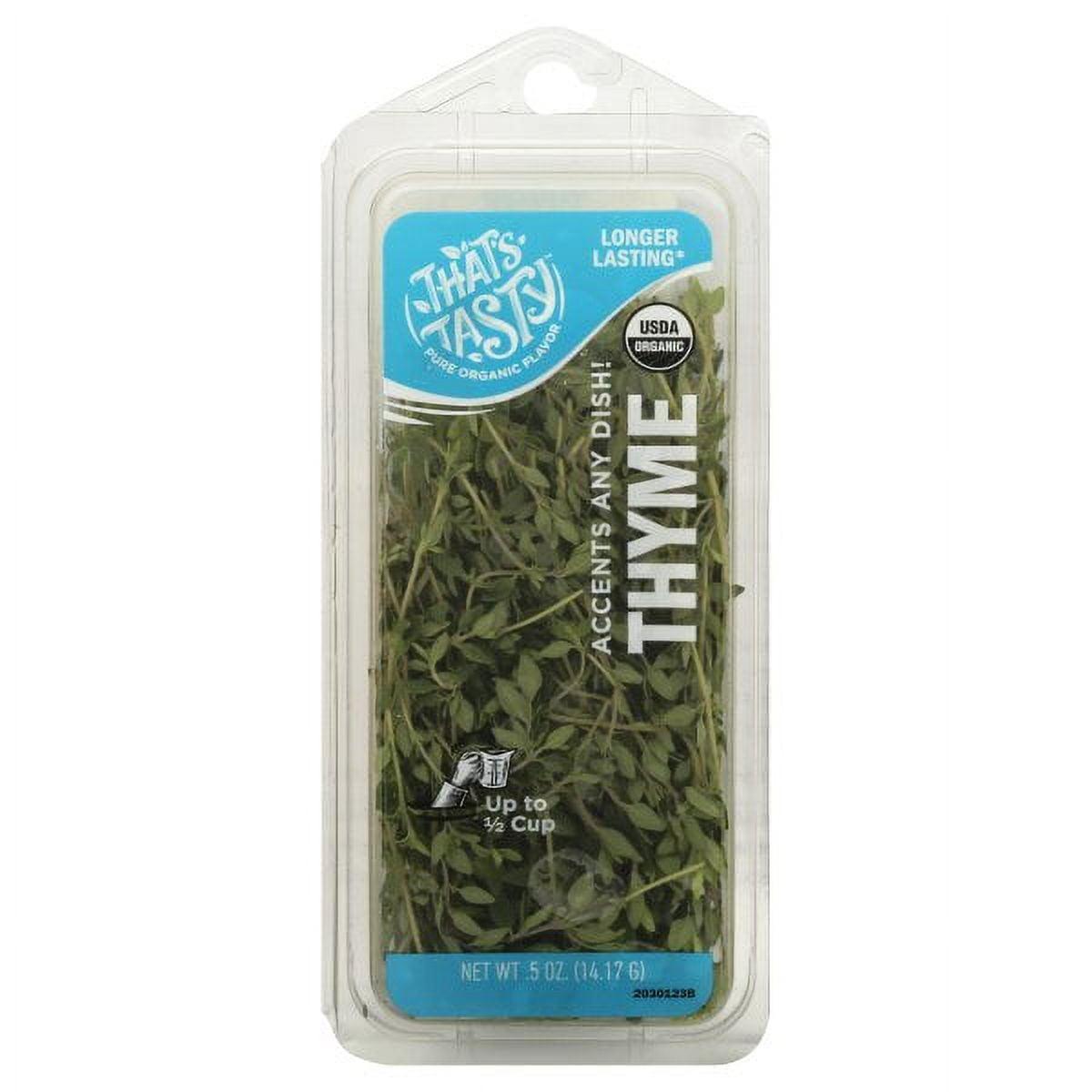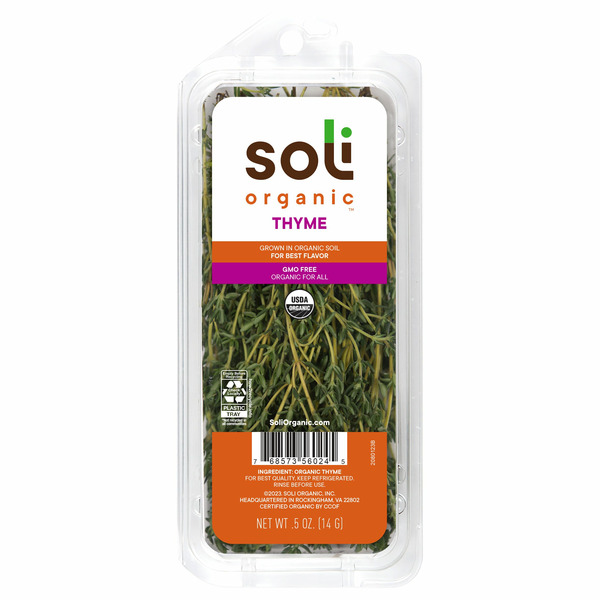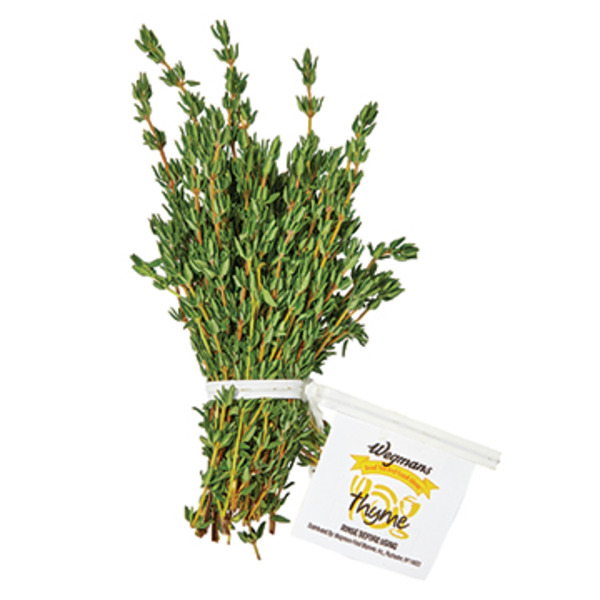MAIN DISHES
SIDE DISHES
SOUPS
Fresh Thyme
Fresh thyme is a popular culinary herb known for its subtle, earthy flavor with a hint of mint and citrus. Originating from the Mediterranean region, thyme is a perennial evergreen herb that belongs to the Lamiaceae family, which also includes other renowned herbs like basil, rosemary, and oregano. Fresh thyme is distinctive with its small, aromatic green leaves attached to slender stems that make it a versatile ingredient, perfect for garnishing or adding depth to a myriad of savory dishes.
Commonly used in Mediterranean, European, and Middle Eastern cuisines, fresh thyme works exceptionally well with a wide range of ingredients like meat, poultry, fish, vegetables, and sauces. It is an essential component in many spice blends such as bouquet garni and herbes de Provence. Due to its delicate nature, fresh thyme should be added towards the end of the cooking process to preserve its flavor. Not only a culinary delight, this herb also offers various health benefits including digestive aid, immune support, and antioxidant properties.
77%
CARBS
5%
FAT
18%
PROTEIN
627 Fresh Thyme Products
Used In 808 Recipes
5
Herb-Infused Garlic Butter Chicken and Potato Skillet
6
Savory Chicken with Bacon and Herbed Mustard Sauce
6
Golden Chicken with Velvety Garlic-Herb Sauce
2
Skillet Balsamic Chicken with Bacon and Green Beans
3
Easy Creamy Mushroom and Spinach Tortellini
3
Garlic Butter Seared Steak
6
Thyme Infused Balsamic Glazed Chicken with Caramelized Onions
3
Golden Crisp Melting Potatoes
Fresh Thyme Is Frequently Used With
Fresh Thyme FAQ
Cooking with fresh thyme often leads to questions regarding the correct usage and preparation methods. It can be quite tricky to handle due to its small leaves and fragile stems. Unlike other herbs that can be easily chopped, fresh thyme requires a certain finesse. It's not uncommon for people to wonder how to prepare it and how much to use in a particular recipe. Similarly, many folks find it challenging to choose the right dishes to complement thyme's unique flavor profile.
The most common mistake people make with fresh thyme is adding it too early in the cooking process, which causes it to lose its delicate aroma and taste. To optimize the flavor and aroma of fresh thyme, it's recommended to add it towards the end of the cooking process.
Another good tip is to strip the leaves from the stem before adding it to your cooking. Hold the top of the stem with one hand and use your other hand to gently slide down the length of the stem with your fingers, which should remove the leaves easily. This method allows you to effortlessly add the small leaves into your dishes, without dealing with the tough, woody stems. However, for dishes like stews and roasts, you can add whole sprigs and remove them before serving.
Fresh thyme can also be used as an attractive and aromatic garnish. Its small, green leaves provide a nice contrast to a variety of dishes and the aroma enhances the overall dining experience. Adding fresh thyme to hot dishes just before serving also helps to release its aromatic oils, adding a final layer of flavor.
How do you prepare fresh thyme for cooking?
How much fresh thyme should I use in my recipe?
When should I add fresh thyme to my dish?
Can I eat the stems of fresh thyme?
What dishes work best with fresh thyme?
How do you store fresh thyme?
Can I substitute dried thyme for fresh?
What can I use if I don't have thyme?
Can I freeze fresh thyme?
Is fresh thyme and dried thyme the same thing?
Expiration & Storage Tips
When does fresh thyme expire?
Fresh thyme, when unopened and kept in its original packaging, can last up to 14 days in the refrigerator. Once opened and exposed to air and moisture, fresh thyme needs to be used within a week for maximum freshness and flavor. However, it could still be safe to use, albeit less aromatic, for up to 2 weeks if stored properly. If you've bought loose thyme, aim to use it within a week. Fresh thyme can be frozen for up to 6 months, but be aware that its texture may change slightly upon defrosting, making it suitable mainly in cooked dishes.
How do you tell if fresh thyme is bad?
Thyme, like most fresh herbs, will show a few clear signs when it's past its best. First, look at the color: fresh thyme should be a vibrant green. If it's turning yellow or brown, or the leaves are wilting and appear slimy, it's time to toss it. Another strong indicator is the aroma — fresh thyme has a robust, earthy scent. If the aroma is weak or non-existent, or if it smells unpleasant, it's best not to use it.
Tips for storing fresh thyme to extend shelf life
• Store fresh thyme in the refrigerator — it's best kept in the crisper drawer which offers the ideal level of humidity.
• To extend the lifespan of your fresh thyme, wrap the stems in a slightly damp paper towel before placing in a zip-top bag.
• You can also place the thyme stems in a jar or glass of water, similar to a bouquet of flowers, and cover the tops with a loose plastic bag before refrigerating.
• If you choose to freeze thyme, wash it well and pat it dry. Lay the sprigs of thyme in a single layer on a baking sheet, freeze until solid, then transfer to a freezer-safe bag or container.
• When defrosting frozen thyme, do it gradually in the refrigerator or let it thaw in the dish as you're cooking it.
EXPIRES WITHIN
8 - 21
DAYS
Substitutes

Thyme Plant

Lemon Thyme

Fresh Basil

Fresh Oregano

Fresh Parsley

Fresh Rosemary

Ground Thyme

Mexican Oregano

Italian Herbs Paste

Basil Plant
See All
Health Info
Macros
1g
CARBS
0g
FAT
0g
PROTEIN
Allowed on these diets
LOW FAT
HIGH CALCIUM
VEGETARIAN
KETO
PALEO
WHOLE 30
MEDITERRANEAN
LOW CARB
VEGAN
LACTOSE FREE
GLUTEN FREE


